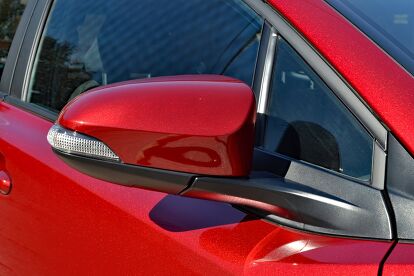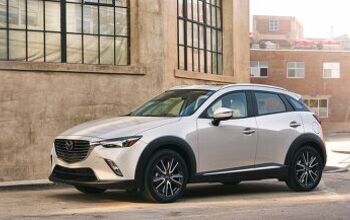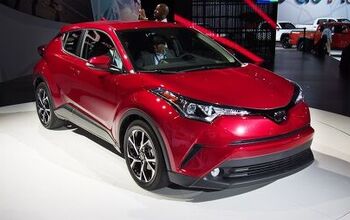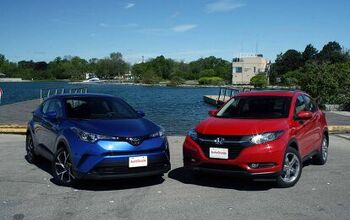2018 Toyota C-HR Pros and Cons

Toyota finally showed up to the subcompact crossover party with a wildly styled offering.
The C-HR was originally supposed to be a Scion, which explains a lot in terms of its funky style and fun driving dynamics. This Toyota really stands out in the segment.
ALSO SEE: Toyota C-HR vs Honda HR-V Comparison
“The Toyota C-HR really surprised me by how fun it was to drive. The chassis on this funky and unique crossover is excellent, making it one of the top picks for driving fans in this segment. I’m also a huge fan of how it looks — almost everything else in this segment looks like a bean, so this fun design is refreshing,” says Jodi Lai, Director of Editorial for AutoGuide Group. “But the C-HR has a few obvious downsides that might make it a harder sell for people looking for utility, tech, and features.”
Make sure to check out our full review of the crossover, but here’s a quick overview of the C-HR’s pros and cons.
2018 Toyota C-HR Pros and Cons
Pros
Great Driving Dynamics: The C-HR comes with one sole engine, a naturally aspirated 2.0-liter four-cylinder churning out 144 horsepower and 139 pound-feet of torque. Those aren’t exactly exciting performance figures, but the numbers don’t tell the whole story.
Sitting lower than a typical crossover with a ground clearance of 6.9 inches and bolstered by a taut chassis, the C-HR pleasantly surprises in the driving dynamics department. The C-HR is confident and nimble while diving into corners and the accurate-feeling steering is a good communicator. The suspension, with MacPherson struts up front and double wishbones at each rear wheel, offers a refined ride with minimal noise intrusions into the cabin over road imperfections.
Unique Style: The C-HR looks different and that’s definitely a good thing in this segment. With its sloping roofline and exaggerated fender flares, the crossover’s profile is aggressive and mimics a sporty hatchback. There are also unique touches such as atypical rear door handles and an available contrast roof and mirror caps.
Robust Safety Features: Toyota Safety Sense is standard on all C-HRs. Apart from offering the expected group of active safety tech such as lane departure alert with steering assist and pre-collision warnings with pedestrian detection, full-speed adaptive cruise control is also included, making C-HR the only competitor in the segment to offer this very useful feature as standard equipment. All C-HR models also come standard with automatic highbeams while blind-spot monitoring with rear cross traffic alert is standard on the XLE Premium trim.
Bulletproof Reliability: This is a Toyota after all, so you should expect years of consistent reliability and worry-free motoring.
Cons
No All-Wheel drive: The C-HR is not offered with all-wheel drive, which is odd because most of its competitors do and AWD is something a lot of people shopping in this segment see as a must-have feature.
Lacks Tech: The C-HR’s infotainment system is dated, not that functional, and doesn’t come with any sort of navigation. While most other vehicles in this segment offer Apple CarPlay and Android Auto compatibility, the C-HR does not, which makes its infotainment system even more frustrating.
The backup camera is also pretty bad. Instead of having the feed in the infotainment screen, it’s placed in the rear-view mirror. It’s small and jarring to use, but it’s better than nothing because the blind spots and rearward visibility in the C-HR are also terrible.
And although adaptive cruise control is available as standard, the system isn’t the best. It leaves too much room between you and the car in front, so other drivers always end up cutting in and then the C-HR reacts by slamming on the brakes. It’s not a natural and smooth-feeling system, so our testers barely ended up using it.
Lacks Utility: The C-HR’s aggressive and funky styling has a downside, and that’s reduced cargo capacity and passenger space compared to its competitors. Although front and rear headroom are both adequate, rear seat legroom comes in at 31.2 inches, which makes it difficult for even average sized adults to feel comfortable. Maximum cargo space lands at a small 36 cubic feet. It’s not all bad though, because with the seats up, cargo space is a respectable 19 cubic feet, which should be enough for grocery runs and other typical daily duties.
Engine Could Use More Power: With 144 horsepower on tap, the C-HR is no slouch at least when compared to power ratings from fellow competitors, but with such a playful chassis, a more stronger engine would make such a dynamic driving experience even more fun.
Discuss this story on our Toyota C-HR Forum

Chidi loves talking about cars. He enjoys exploring the limits of new car technology and performance vehicles. When he is not writing features for AutoGuide, you will most likely find him perusing Kijiji or Autotrader listings for unique classic nameplates.
More by Chidi Ohiaeri



























































Comments
Join the conversation
The C-HR is NOT a crossover, regardless of what Toyota says.